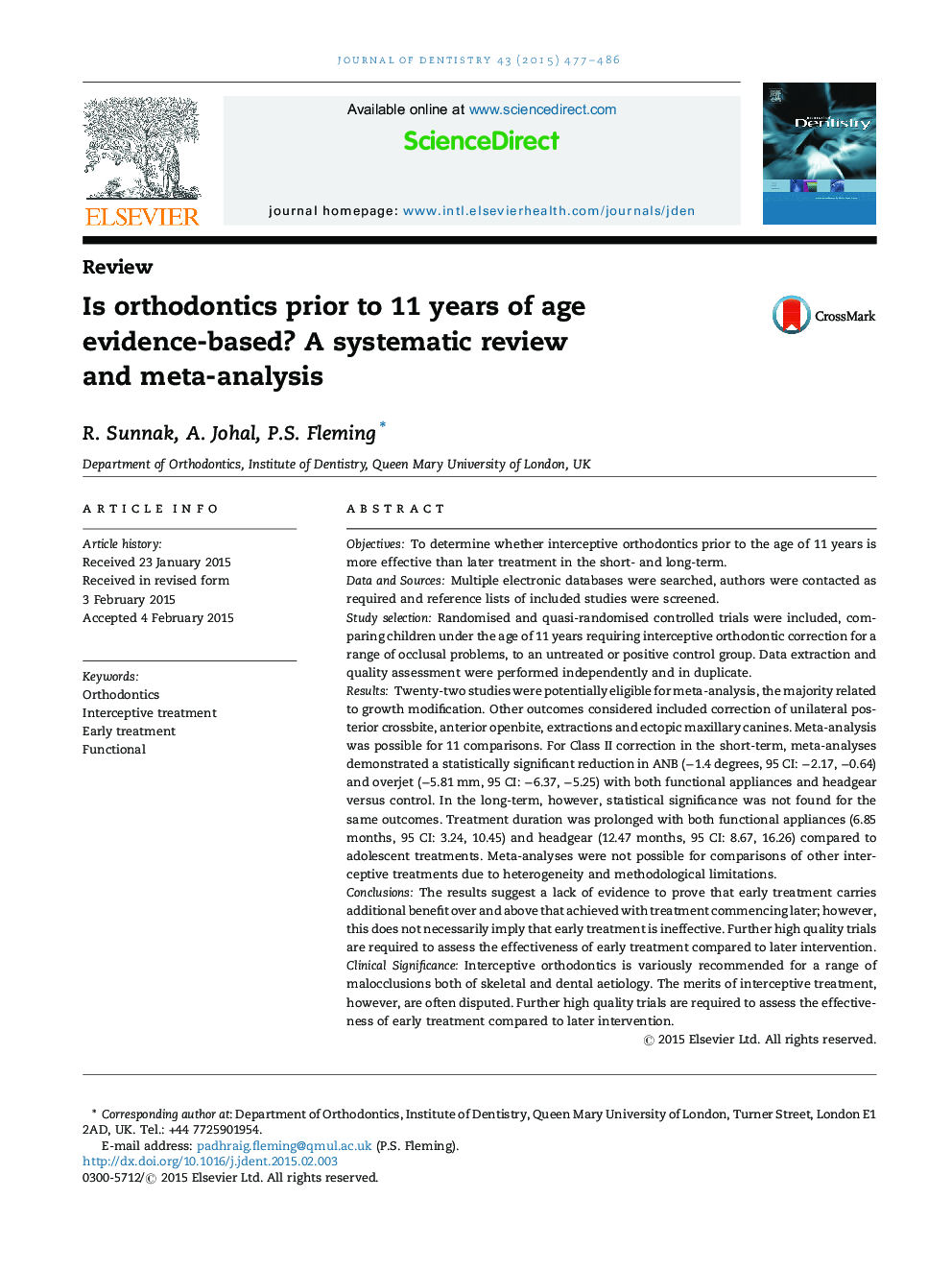| کد مقاله | کد نشریه | سال انتشار | مقاله انگلیسی | نسخه تمام متن |
|---|---|---|---|---|
| 3145010 | 1197030 | 2015 | 10 صفحه PDF | دانلود رایگان |
ObjectivesTo determine whether interceptive orthodontics prior to the age of 11 years is more effective than later treatment in the short- and long-term.Data and SourcesMultiple electronic databases were searched, authors were contacted as required and reference lists of included studies were screened.Study selectionRandomised and quasi-randomised controlled trials were included, comparing children under the age of 11 years requiring interceptive orthodontic correction for a range of occlusal problems, to an untreated or positive control group. Data extraction and quality assessment were performed independently and in duplicate.ResultsTwenty-two studies were potentially eligible for meta-analysis, the majority related to growth modification. Other outcomes considered included correction of unilateral posterior crossbite, anterior openbite, extractions and ectopic maxillary canines. Meta-analysis was possible for 11 comparisons. For Class II correction in the short-term, meta-analyses demonstrated a statistically significant reduction in ANB (−1.4 degrees, 95 CI: −2.17, −0.64) and overjet (−5.81 mm, 95 CI: −6.37, −5.25) with both functional appliances and headgear versus control. In the long-term, however, statistical significance was not found for the same outcomes. Treatment duration was prolonged with both functional appliances (6.85 months, 95 CI: 3.24, 10.45) and headgear (12.47 months, 95 CI: 8.67, 16.26) compared to adolescent treatments. Meta-analyses were not possible for comparisons of other interceptive treatments due to heterogeneity and methodological limitations.ConclusionsThe results suggest a lack of evidence to prove that early treatment carries additional benefit over and above that achieved with treatment commencing later; however, this does not necessarily imply that early treatment is ineffective. Further high quality trials are required to assess the effectiveness of early treatment compared to later intervention.Clinical SignificanceInterceptive orthodontics is variously recommended for a range of malocclusions both of skeletal and dental aetiology. The merits of interceptive treatment, however, are often disputed. Further high quality trials are required to assess the effectiveness of early treatment compared to later intervention.
Journal: Journal of Dentistry - Volume 43, Issue 5, May 2015, Pages 477–486
